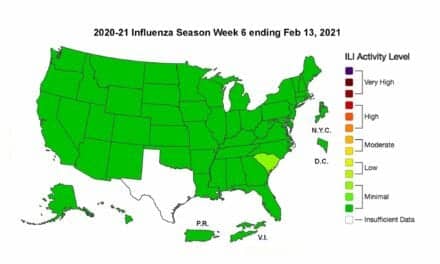Infection control and drug-resistant pathogens
The rapid emergence of resistance to antimicrobial drugs among infectious pathogens is quickly diminishing the treatment options for several common infections, particularly those acquired in the hospital. Several new strains of resistant bacteria–vancomycin-resistant enterococci (VRE), methicillin-resistant Staphylococcus aureus (MRSA), and vancomycin-intermediate S. aureus (VISA)–are of particular concern because they may cause serious, difficult-to-treat infections in hospitalized patients. In response to the clinical isolation of these strains, the Centers for Disease Control (CDC) has issued guidelines for preventing and controlling infections with such organisms.
Mechanisms of Resistance
Bacterial resistance to antibiotics may develop as a result of a chance mutation or by exchange of DNA with another bacterium. It is known that DNA transfer can occur between unrelated species–an astonishing and frightening ability. Plasmids provide the mechanism for the exchange of DNA. Usually plasmid exchange stays within a species, but this is not always the case. Genes that code for antibiotic resistance can be contained within these plasmids and transferred between bacteria.
Bacterial resistance to antibiotics is a phenomenon that dates back approximately 4 billion years. Bacteria have been on earth at least that long. Since that time, higher organisms have been developing chemicals that fight bacteria, and bacteria have been developing strategies to continue their attack. Keep in mind that penicillin and cephalosporins are derived from molds, as are the original forms of many antibiotics.
Bacteria that have acquired antibiotic resistance can overcome or avoid the effects of antibiotics through several basic mechanisms. Bacteria can possess one or all of these mechanisms simultaneously. There are eight major mechanisms by which bacterial resistance to antibiotics can develop.
Enzymatic Inhibition
Some bacteria can synthesize enzymes that destroy the antibacterial agent or modify the agent to alter its entry or receptor binding. Staphylococci, Haemophilus influenzae, and Moraxella catarrhalis, for example, are notorious producers of beta-lactamases, which are enzymes that attach to a chemical side chain on the beta-lactam nucleus of certain antibiotics (for example, penicillins and some cephalosporins), thereby inactivating these antibiotics.
Alteration of Bacterial Membranes
Another mechanism of bacterial resistance is the alteration of the bacterial cell membrane so as to make it impermeable to antibiotics. For example, penicillin is effective against many gram-positive bacteria but not against many gram-negative bacteria. This difference in susceptibility is due to the fact that the outer membrane of gram-negative bacteria prevents entry of penicillin into the cell.
Promotion of Antibiotic Efflux
Promotion of antibiotic efflux is the major mechanism by which resistance to tetracycline is found in enteric gram-negative organisms. Antibiotic efflux is an energy-dependent process that is related to the generation of an inner membrane protein produced by the resistant bacteria. Active antibiotic efflux has also been demonstrated by some bacteria for macrolide antibiotics such as erythromycin.
Alteration of Ribosomal Target Sites
Resistance to a wide variety of antibiotics, including tetracyclines, macrolides, and aminoglycosides, may result from alteration of ribosomal binding sites. Failure of the antibiotic to bind to its target site(s) on the ribosome disrupts its ability to inhibit protein synthesis and cell growth. Alteration of ribosomal target sites is the principal mechanism of multiple-agent resistance among aerobic and anaerobic gram-positive bacteria. Antibiotic resistance due to alteration of ribosomal target sites is commonly described for S. aureus, Streptococcus spp., Bacteroides fragilis, and Clostridium perfringens.
Alteration of Cell-Wall Precursor Targets
Some bacteria develop antibiotic resistance by altering their cell-wall precursor targets, preventing the antibiotic from being incorporated into the cell wall. For example, Enterococcus faecalis and Enterococcus faecium have increasingly exhibited resistance to vancomycin. Vancomycin is a glycopeptide molecule that must bind to an amino acid in the peptidoglycan layer of the cell wall in order to enter the bacterial cell. By altering their cell-wall precursor targets, E. faecalis and E. faecium can prevent vancomycin from entering the cell.
Alteration of Target Enzymes
Another mechanism of resistance is to modify the target enzyme so it remains functional but insensitive to the antibacterial agent. Beta-lactam antibiotics inhibit bacteria by binding to penicillin-binding proteins (PBPs) in the cell membrane. Alterations of enzymes that form PBPs can lead to beta-lactam antibiotic resistance. For example, some resistant strains of Streptococcus pneumoniae have shown changes in their PBPs. In addition, alteration of cell-membrane PBPs has been implicated as a mechanism causing MRSA.
MRSA is often difficult to treat because it is resistant not only to methicillin, but to virtually all penicillins and many other antibiotics.
It is also important to note that some bacteria, notably Escherichia coli, S. aureus, and Pseudomonas aeruginosa, have developed resistance to some quinolone antibiotics by producing alterations of DNA gyrase (a bacterial enzyme).
Overproduction of Target Enzymes
Some bacteria develop resistance by overproducing target enzymes. This causes the target enzymes to remain functional but insensitive to the antibacterial agent (in a way that is similar to the effect of target enzymes that are altered).
Bypass of Antibiotic Inhibition
Another mechanism for acquiring resistance to specific antibiotics is by the development of mutant strains called auxotrophs, which have growth factor requirements different from those of the bacteria from which they were derived. These mutants require substrates that normally are synthesized by target enzymes. Thus, if the substrates are present in the environment, the bacteria are able to grow despite the inhibition of growth enzymes.
Emerging Strains
Gram-positive infections have become an increasing problem in recent years, particularly in the nosocomial setting. Data from the National Nosocomial Infection Surveillance (NNIS) program indicate that enterococci and staphylococci account for more than 50 percent of isolates from infected blood, and an additional 4 percent are streptococci.1 A more recent investigation conducted at 43 medical centers throughout the United States documented that a total of 60 percent of isolates from blood infections were gram-positive species.2
Vancomycin-Resistant Enterococci
VRE, a highly resistant strain of enterococcus, was first reported in Europe in 1988, and is becoming an increasing concern worldwide. VRE is sometimes called VREF, which can stand for vancomycin-resistant E. faecalis or vancomycin-resistant E. faecium. Vancomycin is an extremely potent intravenous antibiotic. When bacteria become resistant to vancomycin, it means that the infection has become difficult to treat. VRE are likely to be resistant to antibiotics other than vancomycin, particularly penicillins.
VRE is a recognized cause of intraabdominal infections, as well as endocarditis, urinary tract infections, wound infections, and bacterial sepsis.
According to Barbara E. Murray, MD, director of the Division of Infectious Diseases at the University of Texas Medical School, Houston, “In today’s world, enterococci are well equipped with a vast array of antibiotic resistance traits. Some of these resistances are inherent, or naturally occurring, traits displayed by most, if not all, of these organisms. Examples include their resistance to cephalosporins, aztreonam, and penicillinase-resistant penicillins such as oxacillin, and resistance to low levels of aminoglycosides and clindamycin.”
Vancomycin use in US hospitals has increased dramatically in the past 10 to 15 years because of a variety of factors, including increases in the incidence of MRSA, prosthetic device-related infections, Clostridium difficile colitis, and inappropriate use of the drug. The use of vancomycin and other antimicrobial drugs is an important risk factor for human VRE infection.
Methicillin-Resistant Staphylococcus Aureus
MRSA was first described in 1961, shortly after the introduction of penicillinase-resistant beta-lactam antibiotics into clinical practice. Since then, hospitals worldwide have reported varying proportions of MRSA among S. aureus isolates. Over time, several MRSA isolates have acquired resistance to other antibiotics; thus, MRSA has become a real clinical and therapeutic problem.
Today, MRSA is a major nosocomial pathogen found in an increasing number of hospitals worldwide. According to data from the NNIS, the percentage of MRSA among all S. aureus isolates rose from 2 percent in 1975 to 29 percent in 1991.3,4 This is a frightening fact that affects not only large teaching hospitals, but also small hospitals and nursing homes.5
Vancomycin-Intermediate Staphylococcus Aureus
S. aureus is one of the most common causes of both hospital- and community-acquired infections worldwide, and the antimicrobial agent vancomycin has been used to treat many S. aureus infections, particularly those caused by MRSA. Although S. aureus remains susceptible to vancomycin, the emergence of strains with only intermediate susceptibility to the antibiotic is raising fears that the emergence of a fully resistant strain is not too far off.
Organisms are deemed susceptible to vancomycin if the minimum inhibitory concentration (MIC) is ?4 æg/mL, intermediately susceptible at 8 to 16 æg/mL, and resistant at ?32 æg/mL.
The first report of an infection with a strain of S. aureus that had only intermediate susceptibility to vancomycin came from Japan in June 1996.6 This report raised concern among infectious disease experts and led the CDC to issue interim recommendations about how to control such VISA infections.7 More recently, two reports of VISA infections in the United States brought the issue closer to home.8,9
The mechanism by which staphylococci become resistant to vancomycin is not clearly understood. Investigators have isolated a vancomycin-resistant S. aureus mutant in vitro that appeared to have structural cell-wall alterations that increased its ability to bind vancomycin.10 The researchers theorized that this alteration may prevent vancomycin from reaching crucial sites of cell-wall synthesis, thus impeding its bactericidal effect.
Most cases of VISA infections have one feature in common: the organism was initially susceptible to the antibiotic, but a moderately resistant strain was subsequently isolated after prolonged vancomycin use.
The CDC recommends that all clinical isolates of S. aureus be tested for susceptibility to vancomycin. Laboratory personnel should notify the laboratory director if vancomycin-resistant or vancomycin-susceptible S. aureus is discovered. Many isolates of S. aureus presumed to have been vancomycin-resistant have been found to be mixed with other organisms in cultures; therefore, vancomycin resistance should be confirmed by restreaking the colony to certify that the culture is pure. The hospital epidemiology program should be notified so it can institute appropriate isolation procedures. The public health department, other hospitals in the vicinity, and the CDC should also be notified.
CDC Guidelines for the Prevention and Control of Nosocomial Infections
The guidelines issued by the CDC in response to the clinical isolation of drug-resistant pathogens7 are listed below. These guidelines are more stringent than those previously published.
If a drug-resistant pathogen, particularly a VISA strain, is isolated, the physician and staff should:
- Notify the state health department and the CDC’s Hospital Infections Program (404-639-6400)
- Inform all personnel involved in the care of the patient and educate them on infection-control precautions
- Isolate the patient in a private room and institute appropriate contact precautions for all staff, including gowning, gloving, and hand-washing with antibacterial soap
- Assign specific workers to provide one-on-one care for the patient
- Minimize the number of persons with access to the patient
- Avoid transferring the patient, if this is possible
- Monitor compliance with contact precautions closely
- Initiate an epidemiologic and microbiologic investigation
- Obtain baseline cultures from the patient and the hands of roommates and all persons in direct contact with the patient
- Obtain additional information. State health departments and the CDC can provide information about what surveillance cultures are needed and how to manage the patient’s discharge. The US Food and Drug Administration (FDA; 301-827-2120) can provide information on investigational antimicrobial agents.
Conclusion
VRE, MRSA, and VISA are alarming problems that represent a significant public health hazard. If a drug-resistant strain is isolated, the physician and staff should follow the guidelines recommended by the CDC, which include notifying the agency and placing the patient in strict isolation.
John D. Zoidis is a contributing writer for RT.
References
2. Jones RN, Kehrberg EN, Erwin ME, et al. Prevalence of important pathogens and antimicrobial activity of parenteral drugs at numerous medical centers in the United States. I. Study on the threat of emerging
resistances: real or perceived? Diagn Microbiol Infect Dis. 1994;19:203-215.
3. Jarvis RW, Martone WJ. Predominant pathogens in hospital infections. J Antimicrob Chemother. 1992;29(suppl):19-24.
4.ÿPanlilio AL, Culver DH, Gaynes RP, et al. Methicillin-resistant Staphylococcus aureus in US hospitals, 1975-1991. Infect Control Hosp Epidemiol. 1992;13:582-586.
5. De Lencastre H, de Jonge BLM, Matthews PR, et al. Molecular aspects of methicillin resistance in Staphylococcus aureus. J Antimicrob Chemother. 1994;33:7-24.
6. Centers for Disease Control and Prevention. Reduced susceptibility of Staphylococcus aureus to vancomycin–Japan, 1996. MMWR Morb Mortal Wkly Rep. 1997;46:624-626.
7. Centers for Disease Control and Prevention. Interim guidelines for prevention and control of staphylococcal infection associated with reduced susceptibility to vancomycin. MMWR Morb Mortal Wkly Rep. 1997;46:626-628, 635.
8. Centers for Disease Control and Prevention. Staphylococcus aureus with reduced susceptibility to vancomycin–United States, 1997. MMWR Morb Mortal Wkly Rep. 1997;46:765-766.
9. Centers for Disease Control and Prevention. Update: Staphylococcus aureus with reduced susceptibility to vancomycin–United States, 1997. MMWR Morb Mortal Wkly Rep. 1997;46:813-815.
10. Sieradzki K, Tomasz A. Inhibition of cell wall turnover and autolysis by vancomycin in a highly vancomycin-resistant mutant of Staphylococcus aureus. J Bacteriol. 1997;179:2557-2566.









